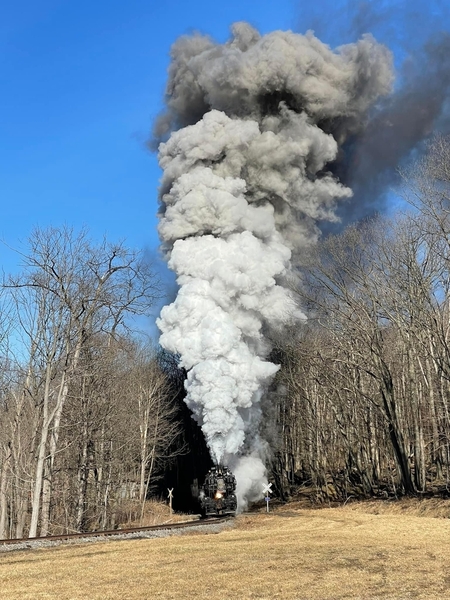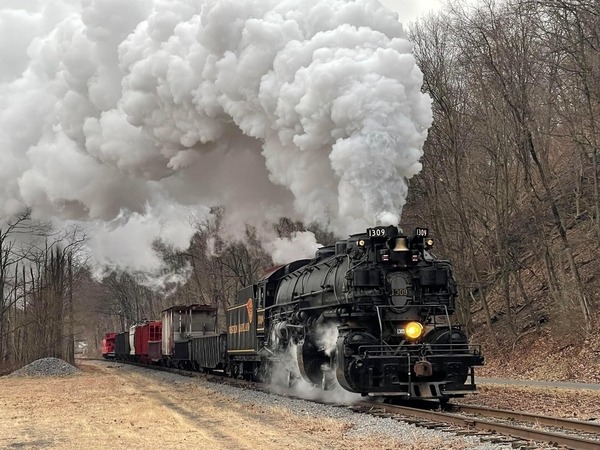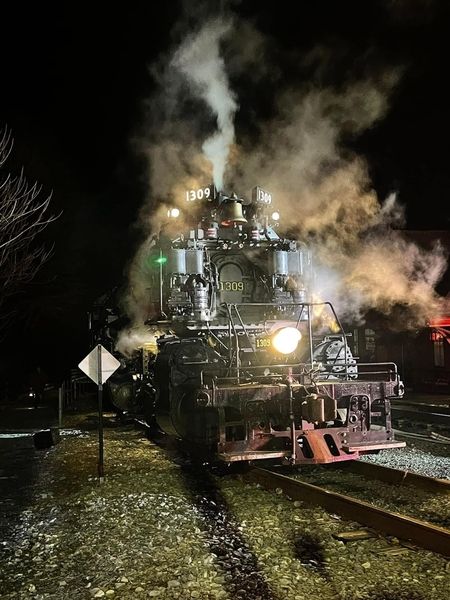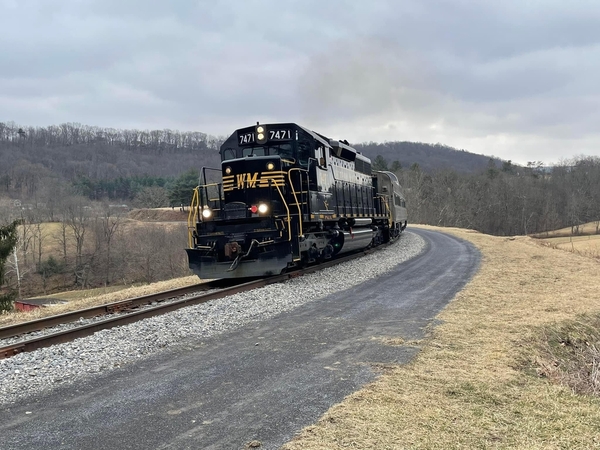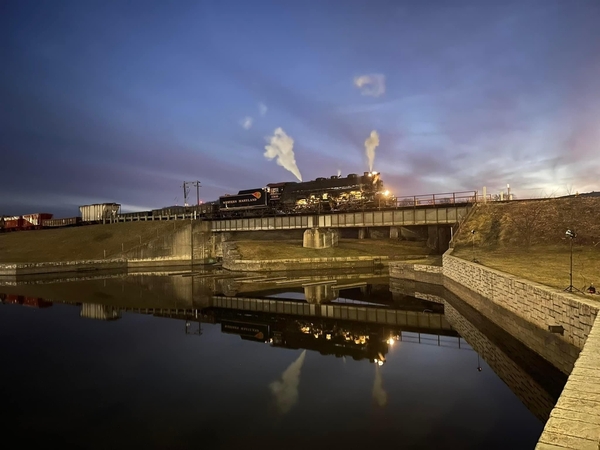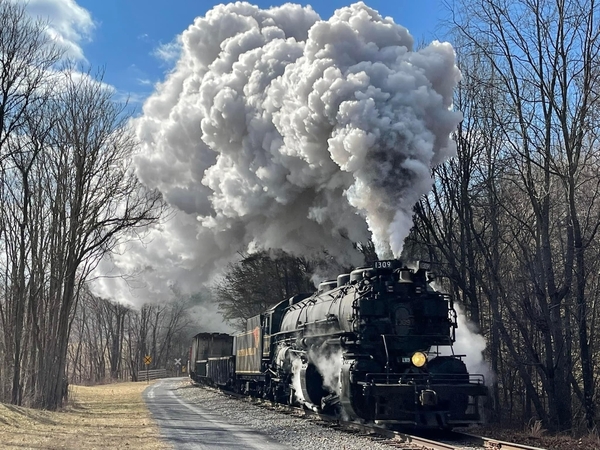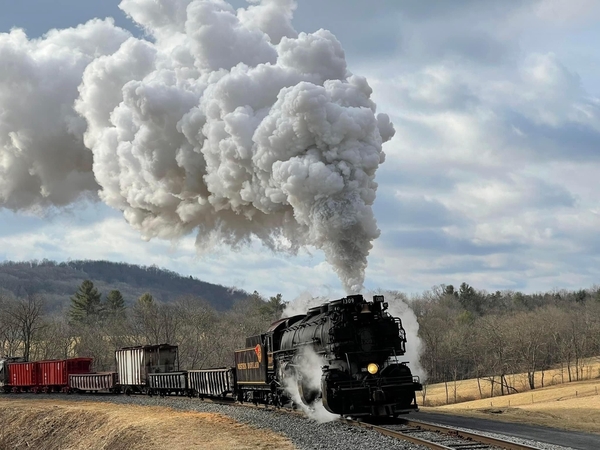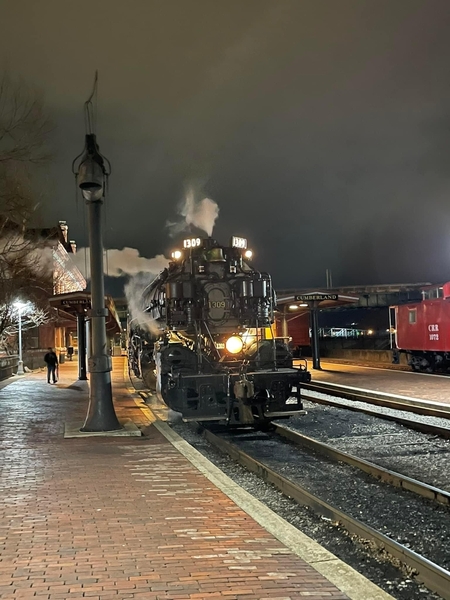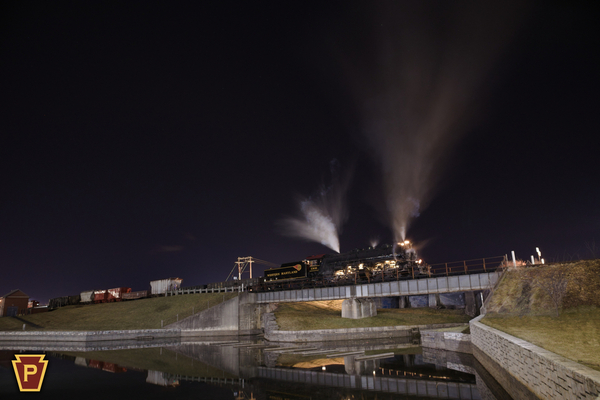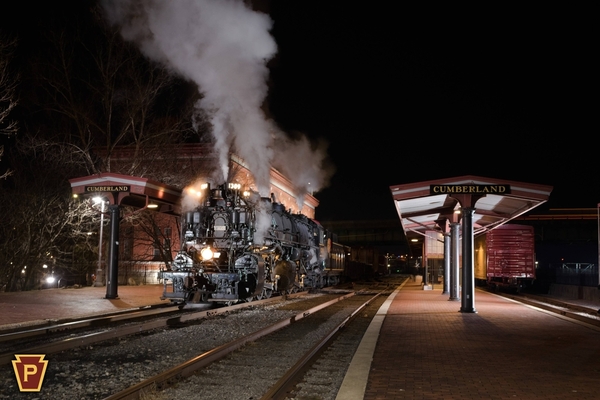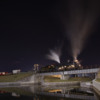The WMSR put on a great show this past weekend. My many thanks to the employees of the railroad for their hard work and hospitality. Everything was top notch. And thanks to the folks at Trains Magazine for their work and organizing this event. Here are a few photos I took over the 3 day event.
Replies sorted oldest to newest
How about any videos of this event?
Stunning photos! Thank you for sharing!
@Hot Water posted:How about any videos of this event?
Attachments
Very nice, and thanks. Sure sounds like she needs her valves set, however. Excellent videos!
(J611) Thank you so much for posting these pictures & videos of this historic event!
Dennis
@Hot Water posted:Very nice, and thanks. Sure sounds like she needs her valves set, however. Excellent videos!
Thanks! No problem. And yes, it does sound like they need some attention. The railroad is also still getting used to operating the locomotive and figuring out water consumption rates amongst other things. I’m sure they’ll get it all figured out and worked on in due time. The only minor hiccup this weekend was an issue with a faulty fireman’s side water glass. It was quickly resolved with spare parts from their shop.
First, excellent pictures and videos! This is great having an operational articulated east of the Mississippi!
Hot water,
I did notice an unusual cadence to the stack talk. However, not ever being around an operational articulated before, I did not know if this was normal or not. I know the 1309 is a compound, so the rear cylinder exhaust is the feed to front ones. Does this effect the stack talk? What do you mean by "needs her valves set" and in general terms what is the procedure for doing so? Are we talking the left and right sides of each engine? Does one worry about the relationship ( steam flow) from the back to the front engine, or does this sort of naturally take care of itself? Looking for an education, thanks!
Chris
LVHR
Very nice. Thanks for sharing.
Tom
Thanks! Great job!
Thank you for this thread and for posting the video's. Simply beautiful.
There isn't much more exciting nor beautiful (man made) than a fresh out of the shop operational steam locomotive working hard on the line. A true testament to man's abilities.
@lehighline posted:First, excellent pictures and videos! This is great having an operational articulated east of the Mississippi!
Hot water,
I did notice an unusual cadence to the stack talk. However, not ever being around an operational articulated before, I did not know if this was normal or not.
No, it is not "normal". As with any steam locomotive, the drivers are quartered, thus producing one exhaust (chuff) ever 90 degrees for each pair of cylinders.
I know the 1309 is a compound, so the rear cylinder exhaust is the feed to front ones.
Yes, but not when starting a train, as the front low pressure cylinders also receive high pressure steam. The locomotive then switches to compound.
Does this effect the stack talk?
Only in that when operating the normal compound mode, there is only four exhausts per revolution of the front engine's drivers.
What do you mean by "needs her valves set" and in general terms what is the procedure for doing so?
The process of "setting the valves" is actually pretty complicated, and back in the days of regular steam operations, the "Valve Setter" was most often a senior Machinist, with many, MANY years of experience (darned near a lost 'art' today).
Are we talking the left and right sides of each engine?
Yes.
Does one worry about the relationship ( steam flow) from the back to the front engine, or does this sort of naturally take care of itself?
The valve events of both engines is done separately, as they are two different "steam engines", and the flow of the exhaust steam from the rear, high pressure cylinders, does not affect the valve timing on the front, low pressure cylinders. Each engine should have its valve events set at exactly 90 degrees of main driver rotation.
Looking for an education, thanks!
Chris
LVHR
Hot Water,
Thank you for the explanation.
Chris
LVHR
Quite the charter for sure!
Like the OP mentioned, my gratitude is extended to the crews from Trains and WMSR for pulling this historic event off so smoothly. The 1309's new life certainly could not have gotten kicked off any better!
Attachments
Brendan,
Those are great pictures and videos, striking night shots. Thanks for sharing.
Did they use the turntable at Frostburg, or back down the mountain?
I can’t wait to get a ride, and see and hear her.
Hopefully Lionel will have this engine in a future catalog.
Terrance
@Craignor posted:Brendan,
Those are great pictures and videos, striking night shots. Thanks for sharing.
Did they use the turntable at Frostburg, or back down the mountain?
I don't believe the track curvature and approach to the turntable has been rebuilt/corrected, so since they had a diesel on the rear end of the train, one would think that they backed down the grade with the diesel leading.
I can’t wait to get a ride, and see and hear her.
@Craignor posted:Brendan,
Those are great pictures and videos, striking night shots. Thanks for sharing.
Did they use the turntable at Frostburg, or back down the mountain?
The approach to the turntable hasn't yet been realigned, so the locomotive was not turned for this charter. One of the diesels from the chase train was tied onto the back of the photo freight for the journey downhill.
I can’t wait to get a ride, and see and hear her.
Awesome ![]()
Watch this to hear what a steam locomotive should sound like if the valves are properly set. It gets interesting about 30 seconds in.
This is a photo run by on the Cuyahoga Valley Scenic RR at Indigo Lake.
@Craignor posted:Brendan,
Those are great pictures and videos, striking night shots. Thanks for sharing.
Did they use the turntable at Frostburg, or back down the mountain?
I can’t wait to get a ride, and see and hear her.
Thanks, Craig. And yes, as was mentioned above, the turntable isn’t an option yet. The chase train had a diesel on both ends for the trip up the hill.
Once we got to Frostburg one of them was cut off. It tied on to the rear of the photo freight to lead that train back down the hill.
You’ll notice in some photos online the diesel behind the caboose on the afternoon run-bys. The diesel controlled the air down the hill. So for the run-bys they swapped control to 1309 and repeated the process for all the afternoon run-bys.
Until they get the turntable situation figured out they plan to have a diesel on the end of each train to lead it back down to Cumberland from Frostburg.
Getting the turntable figured out will take some time. Besides the planning and the work itself, there is the issue of funding to figure out. And they have to coordinate with several government organizations. It would be a little easier if the tracks didn’t cross a city street right before the turntable.
It makes sense to me Brendan. First things first.
I hope Lionel makes a Legacy WM 1309 for us!
Even with the pumps on the front of he smokebox, this and other C&O steam engines look(ed) great! Power and elegance looks at the dame time.
@J 611 posted:Thanks, Craig. And yes, as was mentioned above, the turntable isn’t an option yet. The chase train had a diesel on both ends for the trip up the hill.
Once we got to Frostburg one of them was cut off. It tied on to the rear of the photo freight to lead that train back down the hill.
You’ll notice in some photos online the diesel behind the caboose on the afternoon run-bys. The diesel controlled the air down the hill. So for the run-bys they swapped control to 1309 and repeated the process for all the afternoon run-bys.
Until they get the turntable situation figured out they plan to have a diesel on the end of each train to lead it back down to Cumberland from Frostburg.
Getting the turntable figured out will take some time. Besides the planning and the work itself, there is the issue of funding to figure out. And they have to coordinate with several government organizations. It would be a little easier if the tracks didn’t cross a city street right before the turntable.
One other secondary point.....its difficult to get good lighting for eastbound runbys in the afternoon. Even though the railroad curves a bit, most of the photo locations don't really line up well for afternoon sunlight. By and large, not having the turntable usable doesn't really affect the planning of a photo special very much--at least not on that particular railroad. Most people want the uphill shots at Helmstetter's Curve in the afternoon anyways.
Many of you have been asking for videos from this historic charter, so enjoy nearly 20 minutes of the 1309 strutting her stuff on the Western Maryland!
I enjoyed the video, thank you! Amazing to see this working.
I am no expert on real steam engines, but I did notice that the steam cylinders seam to have allot of steam leaking from them all the time, is that just how it is or are there issues with the seals on these?
@Hump Yard Mike posted:I enjoyed the video, thank you! Amazing to see this working.
I am no expert on real steam engines, but I did notice that the steam cylinders seam to have allot of steam leaking from them all the time, is that just how it is
No. That is NOT supposed to happen.
or are there issues with the seals on these?
Possibly the piston rod and valve rod packing is yet properly seated/broken in.
How do photo charters work? More to the point,
- how are the photographers transported to photo locations?
- How are others who have not paid to be on the photo charter kept away and out of the photos?
@Number 90 posted:How do photo charters work?
In it's simplest elements, a photo charter is an event where a limited number of participants go to different locations on a railroad to film and photograph a train in it's natural environment. For the 1309, the natural environment would have been the steam-to-diesel transition era of the 1950's, and at some locations, period-correct props or actors may be provided to enhance the scene. The schedule is laid out to ensure prime lighting conditions for each location during the day, and night photo sessions feature professionally staged lighting.
There are all sorts of other intricacies to photo charters. If you're interested in learning more, I'd recommend checking out the about section of Lerro Photography's website. Lerro is one of the chief charter operators today, with well over 15 years experience hosting charters across the country.
More to the point,
- how are the photographers transported to photo locations?
This can differ between charters. For this charter, photographers rode aboard a separate passenger train to each of the photo locations. The passenger train was moved out of the way while the freight train performed photo runbys.
- How are others who have not paid to be on the photo charter kept away and out of the photos?
This can be a challenge to control. Purchasing tickets to a charter is always strongly encouraged, and if a non-paying photographer arrives at a location, it's likely they will be asked to move. For people who happen upon a charter without prior knowledge, however, the situation changes. For example, the Great Allegheny Passage Trail, which largely parallels the Western Maryland Scenic, saw plenty of action on the Sunday of this charter, and a few joggers happened to get in the way of the photo line during runbys in the Narrows. In this case, there's not much that anyone can do — after all, the GAP Trail is public, and those using it that day likely had no idea that our event was taking place.
That’s awesome. Gotta love that whistle too. Long may she run!




